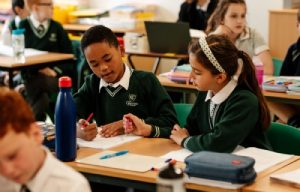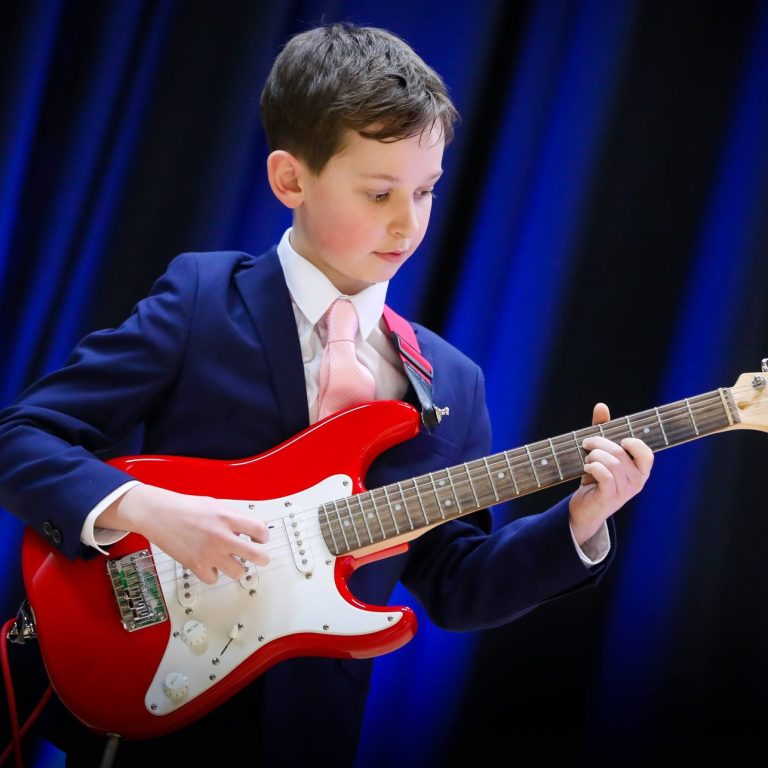
Questions about class sizes are one of the most commonly asked when touring prospective parents. And we understand why. But even in the educational press, the debate surrounding class sizes is often conducted in its most basic form, leading to the view that the smaller the class, the better the outcomes for children. But it’s not quite as simple as that – let me explain why.
Imagine you and another teacher have the task of teaching a cohort of 40 10-year-old children how to play chess. You can split the children roughly into three categories:
The children who have been playing chess since they were 4 years old and who can beat most adults.
The children who know how the pieces move but give you a puzzled look when you mention the phrases ‘check-mate’ and ‘castling’.
The children who have never even seen a chess board and thought a rook was a type of bird.
Now imagine that in your lesson you want every child to make progress by challenging them to perform slightly outside their comfort zone – learning new skills, techniques and tactics as they go. What would you do?
Split your cohort into two groups? (If you did this, how would you deliver your lesson input to make it worthwhile for everyone?)
Get the confident children to teach the beginners while you teach the middle group? (Difficult to ensure the more confident ones make progress though, right?)
Concentrate on your group who have never played so that at least everyone can play to an acceptable standard? (But what about the rest of the children?)
Luckily, here at Greenfield, we have option D. Let me explain what that looks like in terms of Maths and English.
For the vast majority of Maths and English lessons, from Reception upwards, the children are split into three and sometimes four or five groups depending on the needs of the cohort. We do not ‘set’ and never will do, but we do have fluid ability groupings that allow our teachers to deliver the lesson that the children in their group need at that time, for that subject and for that topic. This allows our teachers to work with children in smaller groups to ensure they stay in their ‘Zone of Proximal Development’ – the zone where they are doing something that is slightly too hard for them, but with help, they can achieve. According to the Soviet psychologist Vygotsky, this is where most progress is made; and we agree with him.
Going back to our chess example – have a look at the two scenarios below and decide where your child is most likely to be in their zone of proximal development:
School A
Two classes of 18 children per cohort
Two teachers and one Teaching Assistant per cohort
Children are set and then split into two classes (Let’s call them A and B) for English and Maths
In class A, you have 18 children, some who are amazing at chess and some who don’t know about ‘check-mate’, no Teaching Assistant in this group.
In Class B, you have 18 children, some moving the pieces around who need to learn about check-mate, and some who have never played before, supported by a Teaching Assistant.
School B
Two Classes of between 22 and 24 per cohort
Children are split into three classes (Let’s call them A, B and C) for English and Maths
In Class A, you have 16 children who are confident chess players, and because there are quite a few of them, they benefit from playing each other. This group has a teacher and a TA
In Class B, you have 14 children who are learning how to win a game by achieving ‘check-mate’ – they have a teacher and a Teaching Assistant to help them
In Class C, you have 12 children who need to learn the foundations of Chess, they have a teacher and a member of the Special Educational Needs (Learning Enrichment) team to help them
You have probably guessed by now that Greenfield is School B. We know this model works best for our children and our results going back many years stand as evidence of its success.
But what about the other subjects? Aren’t the class sizes in other subjects too big?
No, is the answer. Here is why:
John Hattie is a researcher best known for his book ‘Visible Learning’, a synthesis of more than 1400 meta-studies covering more than 300 million students worldwide. Hattie’s meta-analysis resulted in a measure of more than 250 influences relating to learning and achievement. Here are the top ten most influential factors deemed to have the biggest impact on achievement (you’ll see the “Effect Size” in brackets – effect sizes greater than 0.4 accelerate student learning):
Collective Teacher Efficacy (1.39) – How much teachers believe they are making a difference to their pupil’s achievements
Self Reported Grades (1.33) – How aspirational children are for themselves
Teacher Estimates of Achievement (1.29) – How aspirational a teacher is for their pupils
Cognitive Task Analysis (1.29) – Teaching pupils not just the content, but how to think about the content
Piagetian Programs (1.28) – Teaching methods based on Piaget’s theory of cognitive development
Jigsaw Method (1.20) – A method where children teach each other
Response to Intervention (1.09) – Providing assistance to pupils who are struggling with an area of their learning
Teacher Credibility (1.09) – How pupils judge a teacher’s competency and how well they trust them to help them to achieve
Conceptual Change Programs (0.99) – Knowing and addressing misconceptions
Prior Ability (0.98) – The inherent ability of the pupil
Here are some other interesting factors and how they scored:
Reducing Class Size (0.21)
Homework (0.29)
Teaching Test Taking (0.3)
Boredom (-0.49)
Moving Schools (-0.32)
Lack of sleep (-0.05)
You will notice with the top ten effects that they are all concerned with the learning process. If we create great learners, and put them in front of aspirational teachers, children will succeed. And it doesn’t matter if there are 18, 20 or 24 children in the class, because in humanities, drama, art, music, PE and the rest, the children don’t spend most of their time being taught, they spend most of their time learning – investigating, practising, researching, hypothesising, trying, failing, trying again and so on). It’s what we do so well at Greenfield, because, to coin a phrase, education is more than just knowledge.

